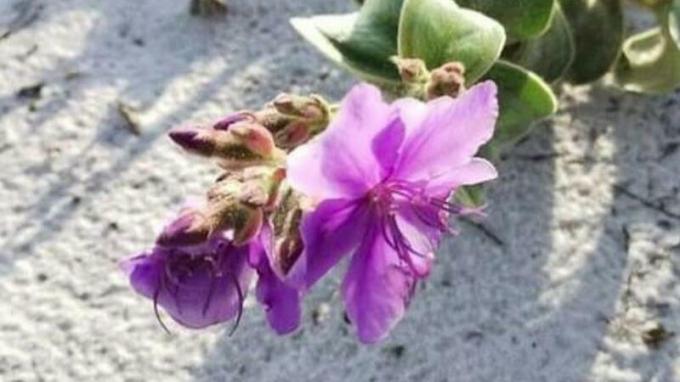Recently, the rare species Pleroma hirsutissimum returned to its original natural habitat, located in the Dunes of Praia do Peró, in Cabo Frio, Lagos Region of the state of Rio de Janeiro. The last time this undergrowth of flowers lilac was collected in the region in 1982, by a researcher from Garden Botanist of Rio de Janeiro, Dorothy Araújo.
100 seedlings of this rare plant were planted in their region of origin on November 17th of this year. They were originated by different inoculation treatments, after the encounter with the species Pleroma hirsutissimum. O Institute Federal Fluminense (IFF), in Cabo Frio, organized research on the species in order to contribute to the reintegration and conservation of this rare plant. Understand more below.
see more
These are the 4 zodiac signs that love solitude the most, according to…
There are some dog breeds considered perfect for people…
Read more: Rare endangered plant found in Hawaiian volcano crater
Learn more about this rare plant
According to information from the Rio de Janeiro Botanical Garden, Pleroma hirsutissimum was rediscovered in 2020. In addition, it is an endemic plant of the sandbanks of Cabo Frio and Arraial do Cabo and the region covered by the Costa do Sol State Park. The plant draws people's attention because of its beauty.

Also according to Jardim Botânico, the plant belongs to the Critically Endangered (CR) category, according to the Red Book of the Endemic Flora of the State of Rio de Janeiro, published by the National Center for Conservation of Flora from the environmental space (CNCFlora).
“The classification is given because it is in an area with strong anthropic pressure, represented by tourism and real estate speculation, and yet because there is little information about it”.
The plant was registered 40 years ago by Professor Dorothy Araújo. Botanical Garden researcher Paulo José Fernandes Guimarães highlighted the importance of rediscovering the plant two years ago.
“From a new record, the shrub has been studied in a doctorate and some scientific works. Our objective is to contribute to the conservation of the dune vegetation, which plays an important role in containing the advance of sea water and reducing the invasion of sand”, she said.
The results of the ongoing studies were presented by the researchers, “such as the anatomy, micropropagation and inoculation of root symbiotic microorganisms with the inoculant developed by the team from the Laboratory of Ecotoxicology and Environmental Microbiology at IFF”, concludes.
Lover of movies and series and everything that involves cinema. An active curious on the networks, always connected to information about the web.
